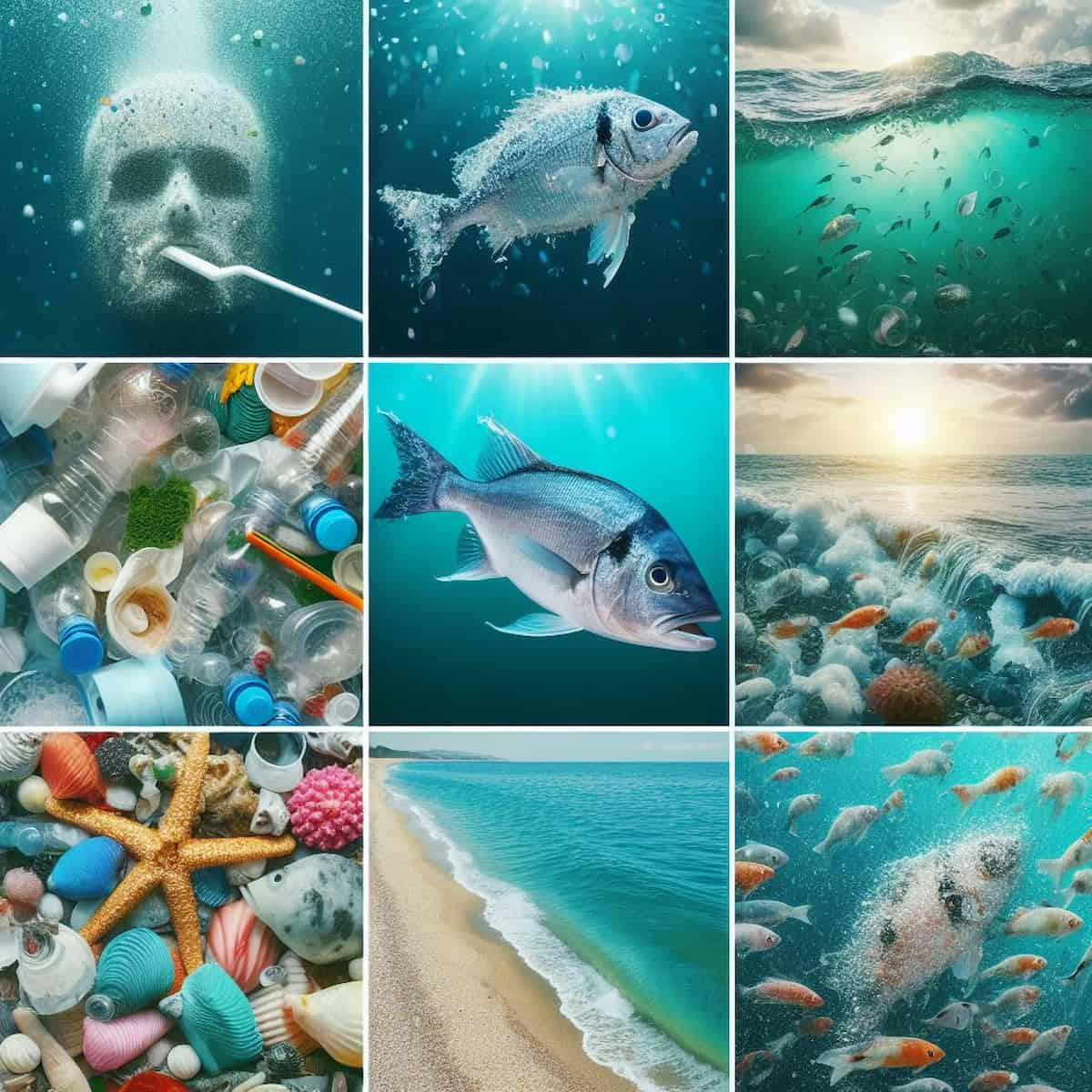Microplastics, those elusive infiltrators, have stealthily permeated every corner of our environment, posing a silent yet significant threat to ecosystems and human well-being. Let’s embark on a journey to uncover the clandestine presence of these tiny pollutants and their far-reaching impacts.
Key Takeaways:
- Microplastics, defined as plastic particles less than 5 millimeters in size, pervade terrestrial, aquatic, and atmospheric environments worldwide.
- Sources of microplastics include plastic fragmentation, microbeads in personal care products, synthetic textile fibers, and industrial processes.
- Understanding the distribution and impacts of microplastics is essential for implementing effective mitigation strategies and preserving environmental integrity.
Exploring Microplastics in the Environment:
- Widespread Distribution:
- Microplastics infest diverse habitats, from bustling urban centers to remote wilderness areas, and from the depths of oceans to the heights of mountain ranges.
- Despite their diminutive size, microplastics exert a profound influence, leaving no ecosystem untouched by their presence.
- Versatile Sources:
- Plastic fragmentation stands as a primary source of microplastic contamination, resulting from the degradation of larger plastic items due to environmental forces.
- Microplastics also originate from microbeads in personal care products, synthetic fibers shed by textiles, and various industrial processes, further exacerbating environmental pollution.
Impacts on Ecosystems:
Microplastics exact a toll on ecological balance and biodiversity through various mechanisms:
- Marine Vulnerability:
- Aquatic organisms, from microscopic plankton to majestic whales, ingest microplastics, mistaking them for food.
- Accumulation of microplastics in the digestive tracts of marine species can lead to physical harm, nutrient deprivation, and reproductive impairments, jeopardizing marine ecosystems.
- Terrestrial Disruption:
- Microplastics in soil alter soil composition and structure, impacting nutrient cycling and plant health.
- Terrestrial organisms, including insects, birds, and mammals, may inadvertently ingest microplastics, potentially disrupting food chains and ecosystem dynamics.
Human Health Concerns:
Microplastic contamination extends its reach to human populations, raising concerns about potential health impacts:
- Food Chain Contamination:
- Microplastics ingested by marine organisms can enter the human food chain through seafood consumption, introducing the risk of exposure to harmful chemicals and pathogens.
- Contaminated drinking water sources further amplify the potential for human ingestion of microplastics and associated health risks.
- Airborne Exposure:
- Synthetic textile fibers shed microplastics during washing and wear, contributing to airborne pollution.
- Inhalation of airborne microplastics raises concerns about respiratory health effects and the introduction of foreign particles into the human body.
Mitigating Microplastic Contamination:
Combatting the microplastic menace demands concerted efforts and innovative solutions:
- Regulatory Measures: Enactment of policies to reduce plastic production, enhance waste management practices, and phase out microplastic additives in consumer products.
- Technological Innovations: Development of filtration systems, biodegradable alternatives, and sustainable materials to mitigate microplastic pollution.
- Public Awareness: Education campaigns to inform individuals and communities about the impacts of microplastic contamination and promote sustainable consumption habits.
Conclusion:
Microplastics, though imperceptible to the naked eye, wield a significant influence on ecosystems and human health, necessitating urgent action to curb their proliferation. By fostering collaboration, innovation, and awareness, we can confront the microplastic crisis and safeguard the integrity of our environment for future generations.
Join the movement: How can we collectively address microplastic contamination and protect the health of our environment and communities? Share your insights and initiatives below to inspire positive change!
















